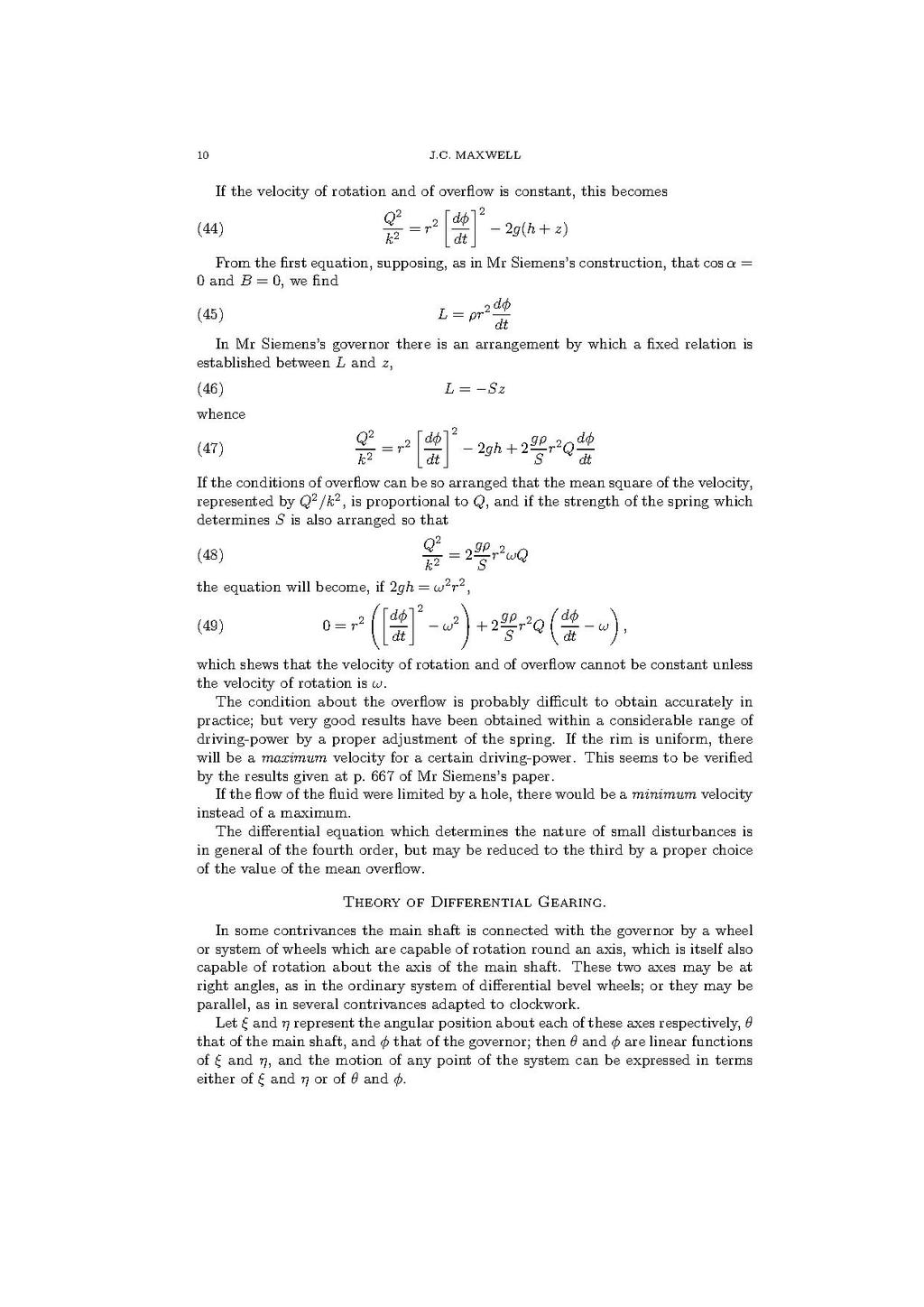If the velocity of rotation and of overflow is constant, this becomes
| (44) |
From the first equation, supposing, as in Mr. Siemens’s construction, that cos and , we find
| (45) |
In Mr. Siemens’s governor there is an arrangement by which a fixed relation is established between and ,
| (46) |
whence
| (47) |
If the conditions of overflow can be so arranged that the mean square of the velocity, represented by , is proportional to , and if the strength of the spring which determines is also arranged so that
| (48) |
the equation will become, if ,
| (49) |
which shows that the velocity of rotation and of overflow cannot be constant unless the velocity of rotation is .
The condition about the overflow is probably difficult to obtain accurately in practice; but very good results have been obtained within a considerable range of driving-power by a proper adjustment of the spring. If the rim is uniform, there will be a maximum velocity for a certain driving-power. This seems to be verified by the results given at p. 667 of Mr. Siemens’s paper.
If the flow of the fluid were limited by a hole, there would be a minimum velocity instead of a maximum.
The differential equation which determines the nature of small disturbances is in general of the fourth order, but may be reduced to the third by a proper choice of the value of the mean overflow.
Theory of Differential Gearing.
In some contrivances the main shaft is connected with the governor by a wheel or system of wheels which are capable of rotation round an axis, which is itself also capable of rotation about the axis of the main shaft. These two axes may be at right angles, as in the ordinary system of differential bevel wheels; or they may be parallel, as in several contrivances adapted to clockwork.
Let and represent the angular position about each of these axes respectively, that of the main shaft, and that of the governor; then and are linear functions of and , and the motion of any point of the system can be expressed in terms either of and or of and .
![{\displaystyle {\frac {Q^{2}}{k^{2}}}=r^{2}\left[{\frac {d\phi }{dt}}\right]^{2}-2g(h+z)}](https://wikimedia.org/api/rest_v1/media/math/render/svg/b3ba7eae60fb22e15d6fae32a3e06bc419b1c18a)






![{\displaystyle {\frac {Q^{2}}{k^{2}}}=r^{2}\left[{\frac {d\phi }{dt}}\right]^{2}-2gh+2{\frac {g\rho }{S}}r^{2}Q{\frac {d\phi }{dt}}}](https://wikimedia.org/api/rest_v1/media/math/render/svg/f8e5d893383e2061cf743dc097f81d6f6e0d568f)





![{\displaystyle 0=r^{2}\left(\left[{\frac {d\phi }{dt}}\right]^{2}-\omega ^{2}\right)+2{\frac {g\rho }{S}}r^{2}Q\left({\frac {d\phi }{dt}}-\omega \right),}](https://wikimedia.org/api/rest_v1/media/math/render/svg/3994c91c1db3c041a3885332b47ac11eed6a585e)





